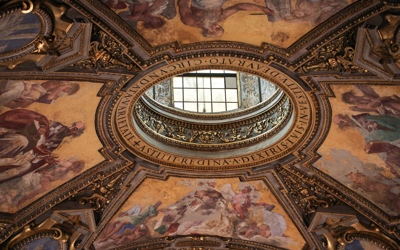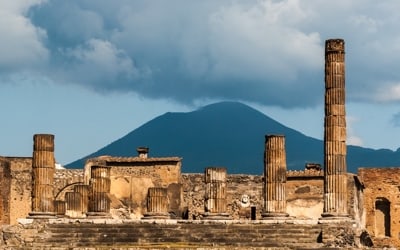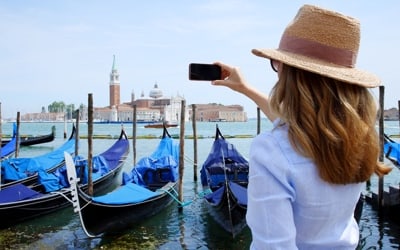
From Spanish Steps to Subterranean Vicus Caprarius tour
Begin your tour in Piazza di Spagna, on the bottom of the eponymous Spanish Steps. You'll be immediately taken aback by such elegance: the yellow, brownish ochre-colored buildings, Bernini’s fountain and the celebrated Spanish Steps rising up towards the Church of Trinità dei Monti. At Piazza di Spagna you'll also admire the early-Baroque fountain called Fontana della Barcaccia ("Fountain of the ugly Boat"), constructed in 1627-29 and often attributed to Pietro Bernini, father of a more famous son, Gian Lorenzo Bernini.
During the restoration of the former Cinema Trevi, workers unearthed the remains of a Roman mansion, built on the site of two communal dwelling, on the west side along the Vicus Caprarius (“Goat Alley” in Latin). “Città dell’Acqua” (City of Water) is currently used to describe the archeological complex of the Vicus Caprarius: it contains the water source that feeds the monumental baroque Trevi Fountain.
You'll enter the City of Water at street level, where you'll take a set of stairs, which will lead you to the underground ruins. There, right below the Mondadori Trevi bookstore and the Sala Cinema Alberto Sordi, you'll find remnants of the 4th-century Domus (mansion), water running from ancient Roman pipes and items (such as bronze coins and amphorae, or terracotta flasks) that were uncovered during the excavation. Your guide will tell you how one of the apartment dwelling’s first floor was turned into the aforementioned water distribution tank.
The story tells that Caesar Augustus asked to his wealthy friend, Marcus Agrippa, to develop this neighborhood. To do so, Marcus Agrippa ordered an aqueduct, the Acquedotto Vergine, built in 19 B.C. along with a system of tanks and pipes to distribute the water. You'll find out that the tank in Vicus Caprarius is the only one of 18thought to have survived.

















